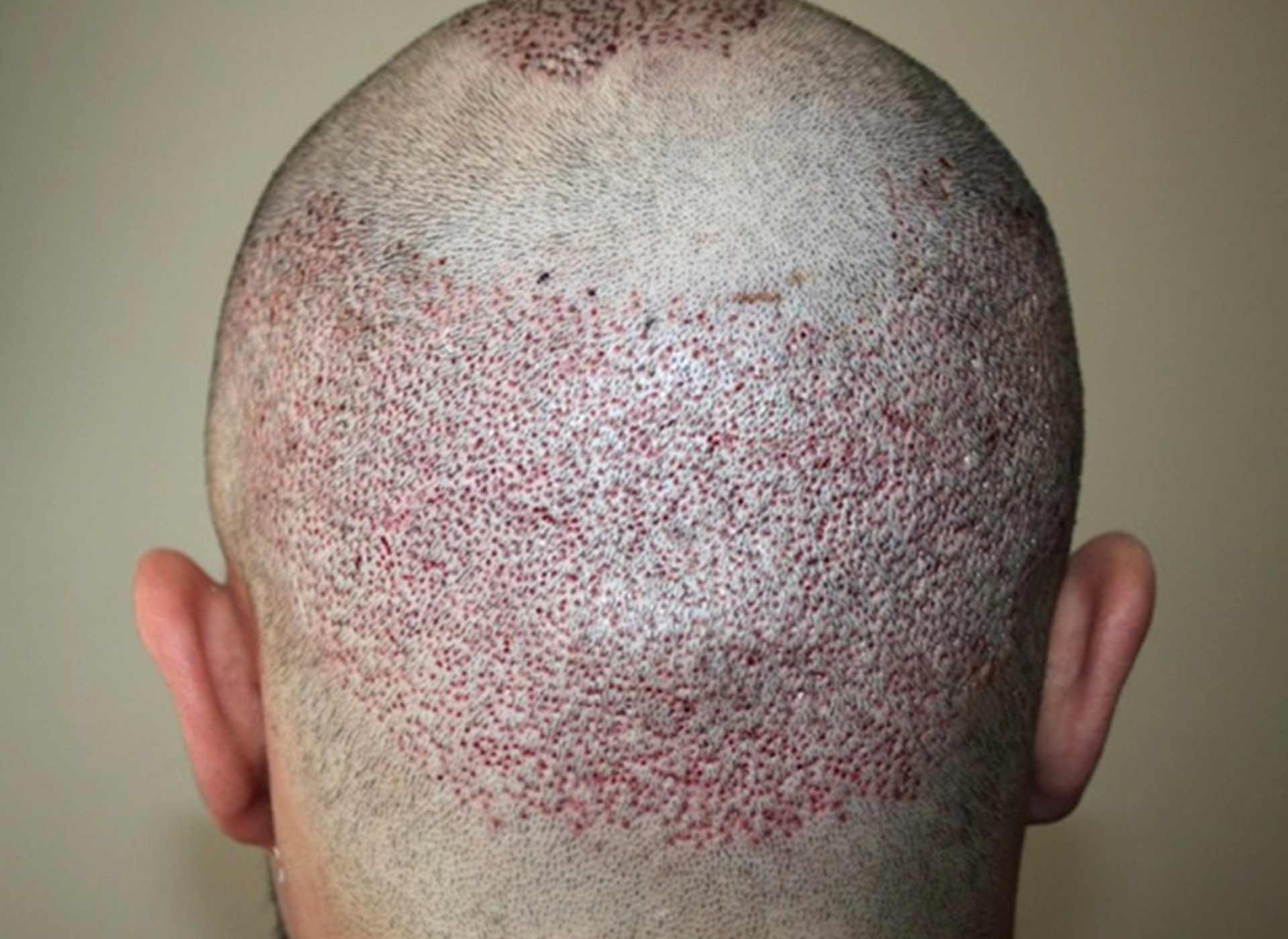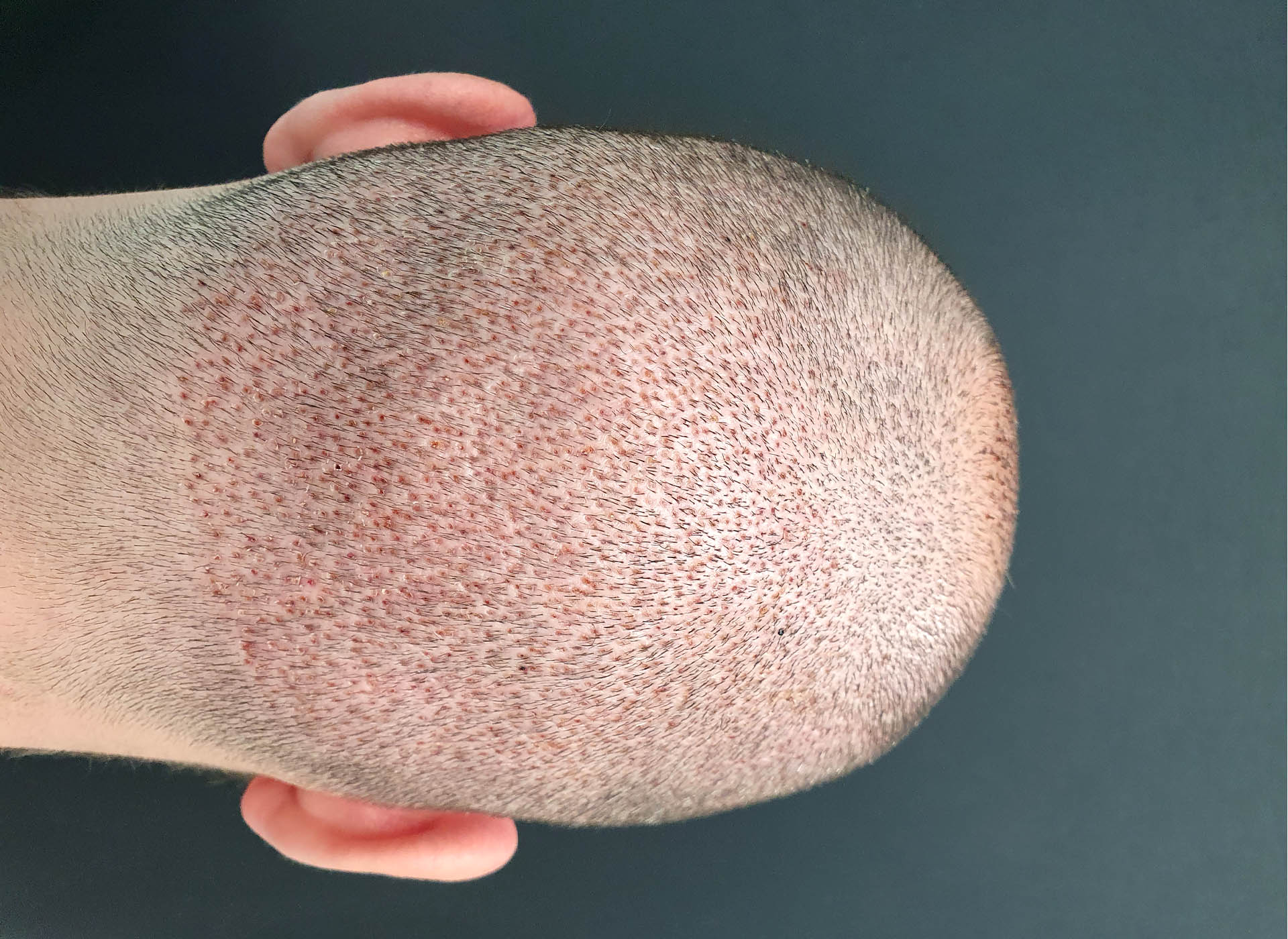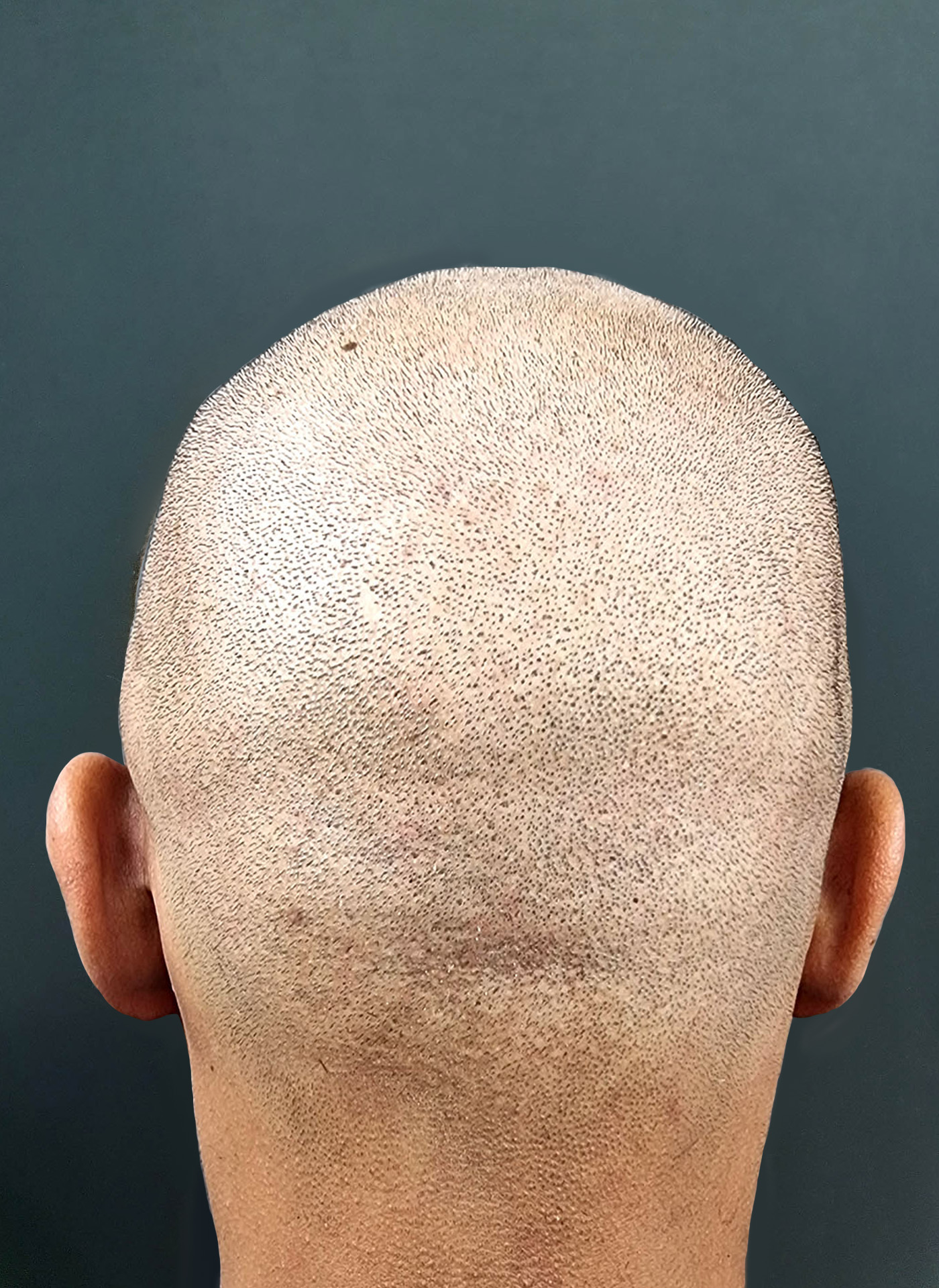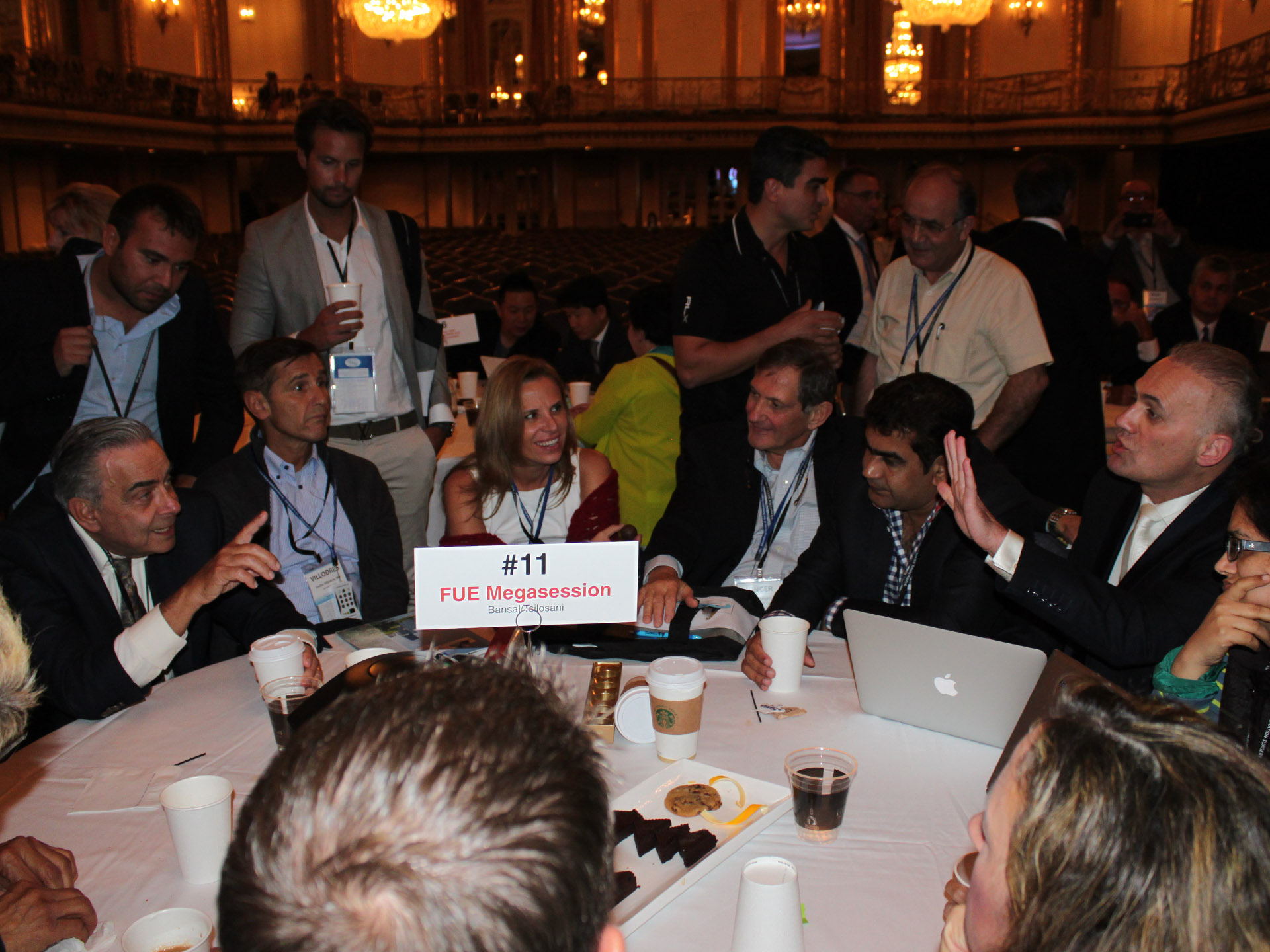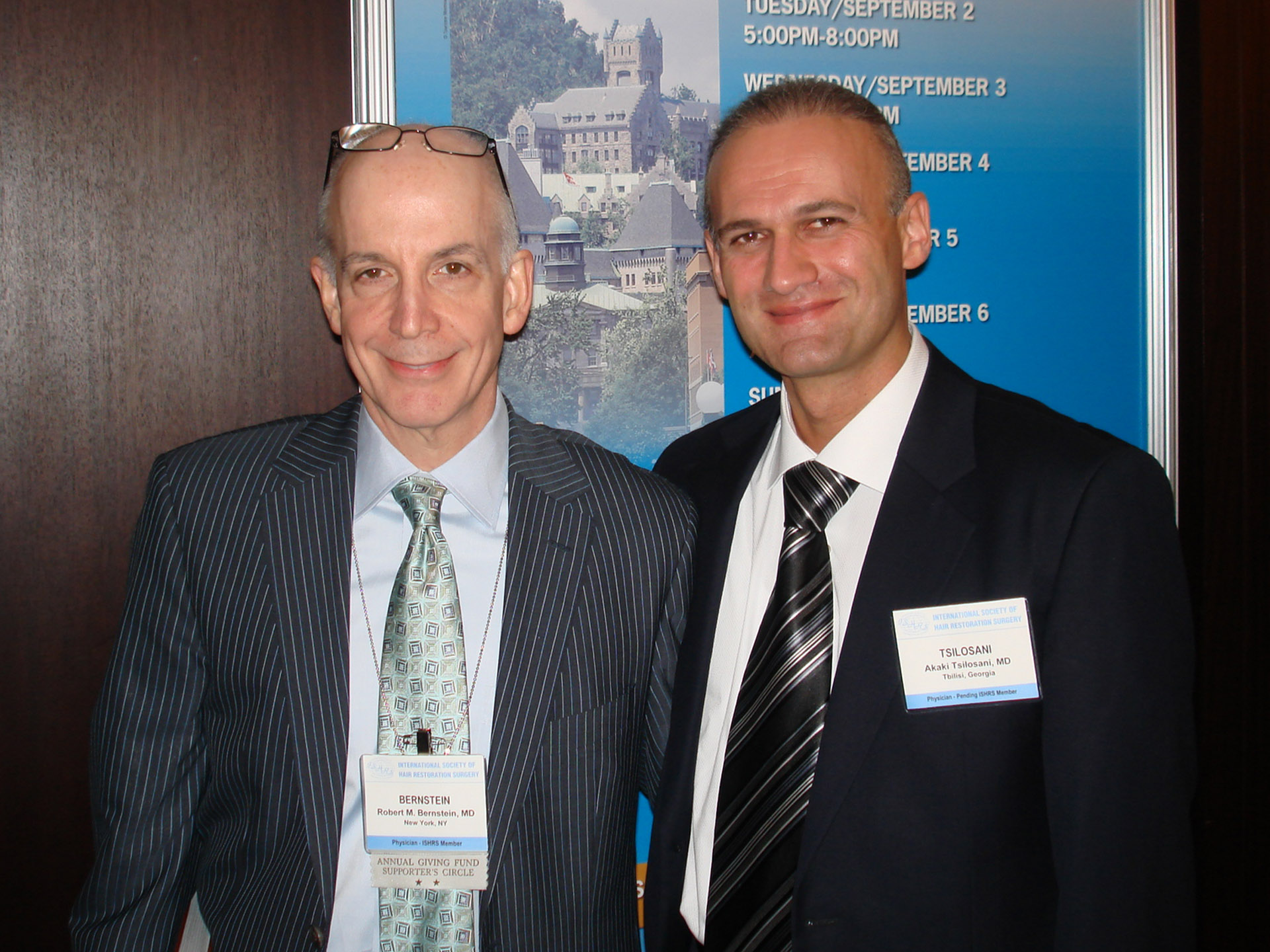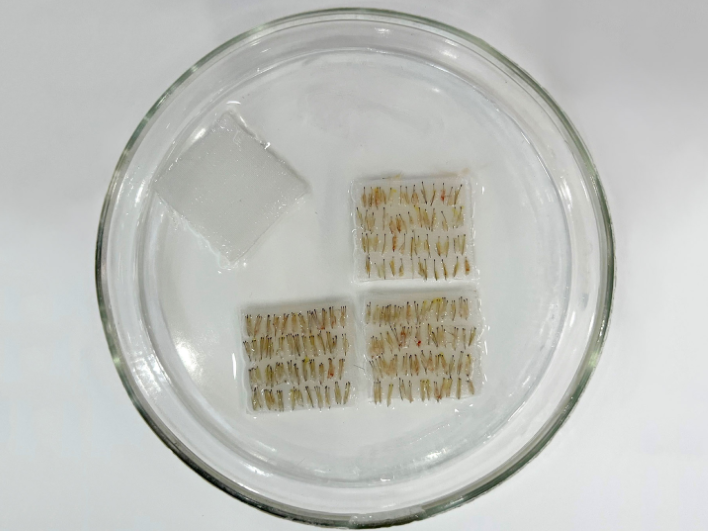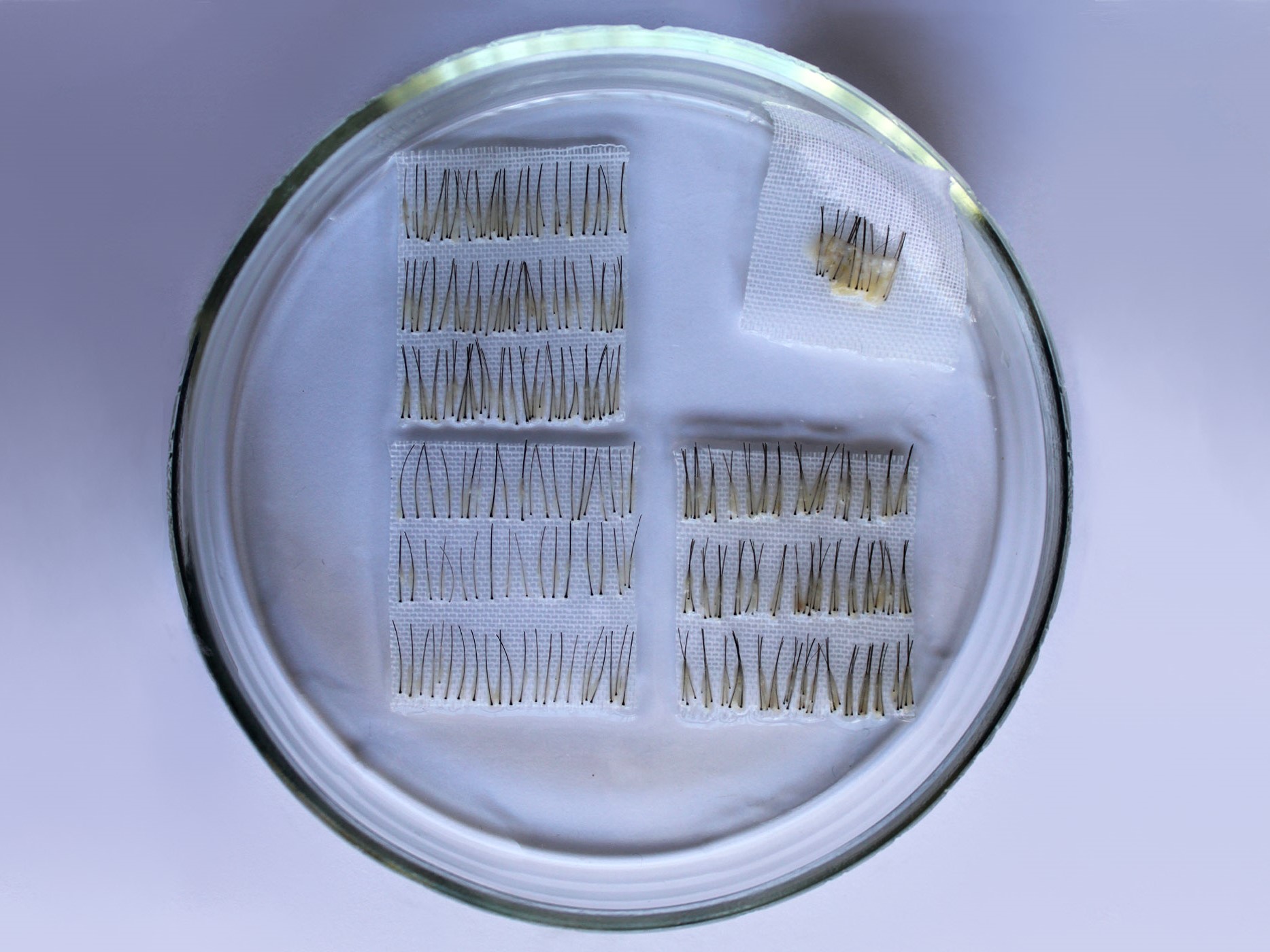FUE (Follicular Unit Extraction, sutureless method)
FUE (Follicular Unit Extraction or sutureless technique) is a hair transplantation method where donor material is harvested from the back of the head or other body parts (beard, chest, groin, legs, etc.) in the form of individual follicular units - grafts, using small (up to 1 mm in diameter) rotating punches - microtrocars, without any incisions or sutures.
In the FUE method, the surgeon uses a rotating punch to make circular, superficial (2-4 mm deep) incisions around each follicular unit, after which the surgeon's assistant extracts them one by one using special forceps. Small defects (up to 1 mm in diameter) at the sites of follicular unit (graft) extraction heal quickly with tiny micro-scars (see photos 1, 2, and 3). The FUE technique does not leave linear scars on the back of the head, as occurs with the FUT method. This is the main advantage of FUE.
FUE is considered a more modern method, but in reality, this is far from the truth.
The beginning of the FUE era is recognized as the famous publication by American hair transplant specialists William Rassman and Robert Bernstein, "FUE Procedure - Minimally Invasive Hair Transplantation Technique" in the journal "Dermatologic Surgery" in 2002. After this article, FUE procedures became widespread all over the world. However, in reality, the FUE technique appeared in Japan during World War II. Dr. Shoji Okuda and especially Dr. Hajime Tamura used exactly the same methodology as we do today with FUE, but their invaluable experience was lost due to the war. In the 1990s, in Australia, Dr. Ray Woods began to use this technique again, but he did not present or publish his work anywhere, so Rassman and Bernstein are considered the pioneers of the FUE method (see photos 4 and 5).

Photo 6. 7-Hair FUE graft harvested with the punch designed by Dr. Tsilosani
FUE is currently the most widespread and popular hair transplant method, facilitated by its obvious advantages:
- The FUE method involves no incisions or sutures in the donor area and consequently leaves no linear scar, allowing the patient to wear a very short haircut if desired.
- The FUE technique is undoubtedly less invasive than FUT, and the post-operative period is more comfortable for patients compared to the FUT method.
- The FUE method allows for harvesting hair not only from the back of the head but also from other body parts (chest, beard, groin, legs, etc.) when there is little hair on the back of the head.
- During the first hair transplant procedure, the FUE method allows for obtaining grafts with a higher hair (follicle) content (Photo 6), as the surgeon targets and extracts follicular units with more hairs.
However, the FUE technique also has many disadvantages:
- Although the FUE procedure does not leave a linear scar on the back of the head, it cannot be called a scarless technique. After the FUE procedure, in the donor area where follicular units are extracted, tiny micro-scars remain where hair will no longer grow. The density at the back of the head naturally decreases, and with large-scale hair transplants (extraction of 5000 grafts or more), donor area depletion or continuous scarring often occurs (see photos 7 and 8).
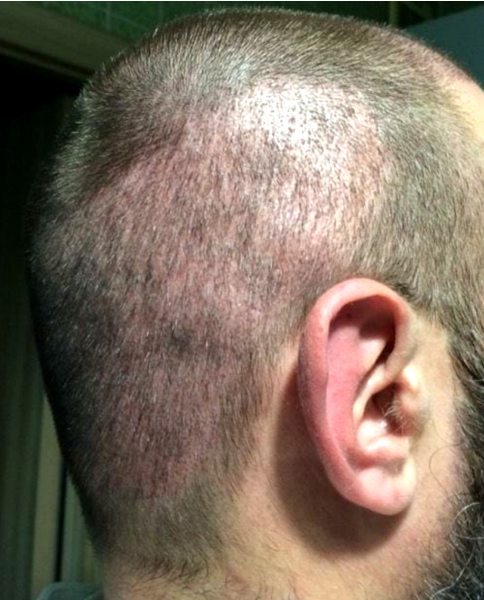
Photo 7. Depletion of donor area after aggressive harvesting of 5000 grafts by the FUE transplant method in one of the Turkish clinics
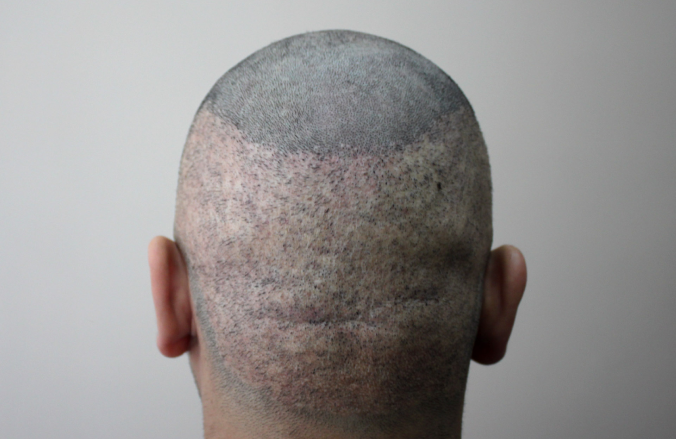
Photo 8. Complete scarring of the donor area after poor-quality harvesting of 9000 grafts by the FUE transplant method in one of the Turkish clinics
2.During the FUE procedure, even with experienced surgeons using the most advanced punches and extraction devices, the percentage of transection (cutting, damaging) of follicles is significantly higher than in the FUT procedure (see photos 9 and 10).
3.The FUE procedure requires complete or partial shaving of hair (only at the back of the head). We often perform the FUE hair transplant procedure without shaving the hair at all, but this technique is more labor-intensive, time-consuming, and costly. If an experienced surgeon performs the FUE procedure, the cost of the FUE procedure is always higher than when using the FUT technique.



